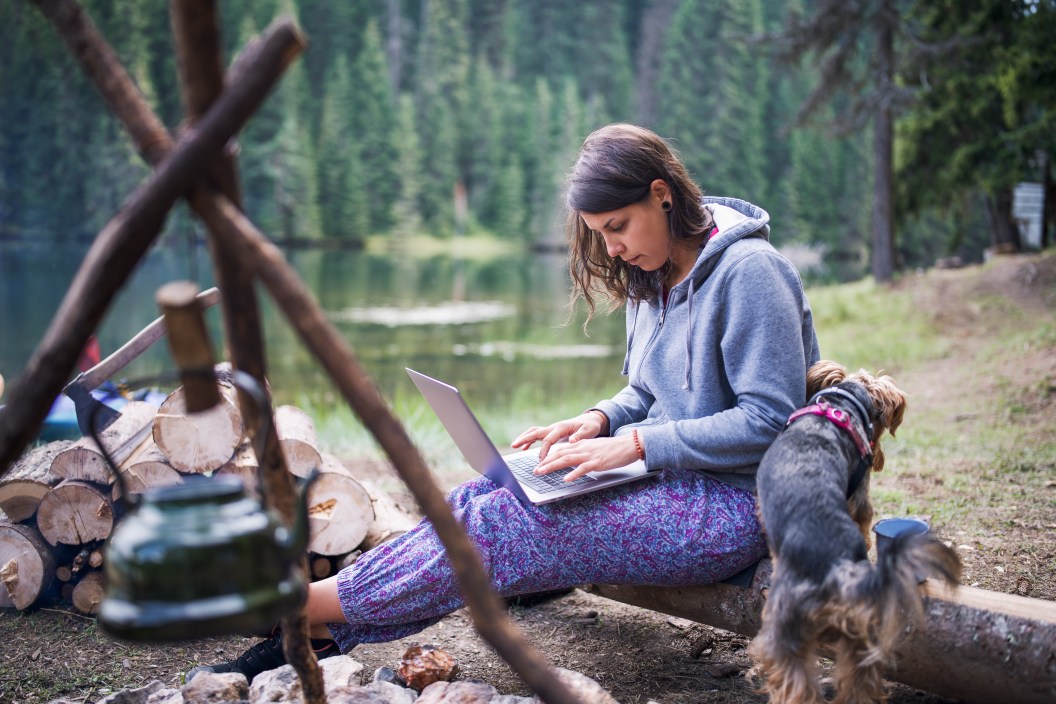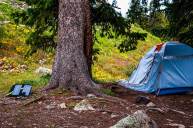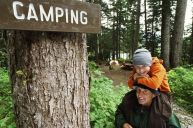I used to live in a van full-time while also working remotely; I've been both a freelancer with a flexible schedule, as well as a 9-to-5 remote worker that needs very reliable connectivity. As a result, I've had to find some creative ways to stay connected—everything from working in coffee shops and libraries to using cell boosters and campground WiFi.
With more people than ever working from home and wanting to get into the great outdoors, this is becoming more commonplace. In fact, a 2022 report from campground giant KOA found that roughly 44% of polled campers worked while camping, allowing them to save their PTO for rainy days.
If you work a 9-to-5 but want to score more time in nature, there are definitely ways to make your camping trips more work-friendly. Small steps, like ensuring a campsite is Wi-Fi-enabled and has reliable power, can let you set up a work environment on the road. Here's how to do it, from someone who did it for years.
How to Get Wifi
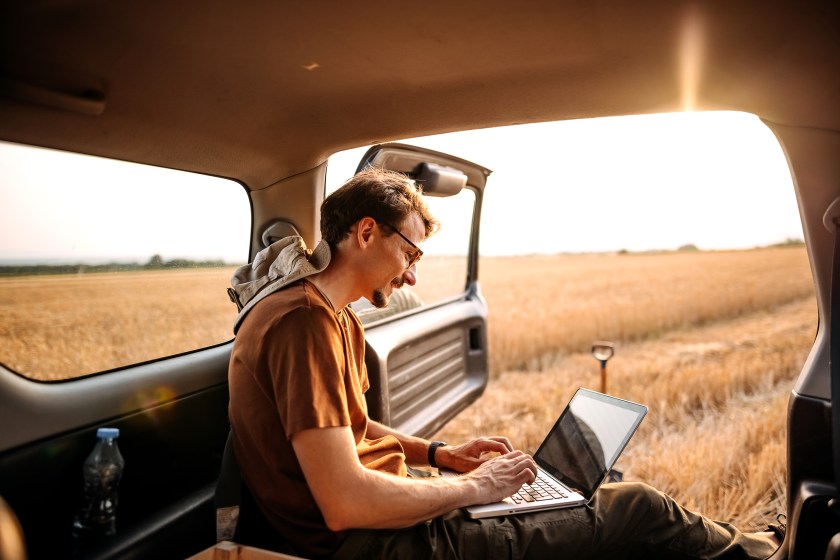
Getty Images, StefaNikolic
If you're going to be productive while camping, you'll need a reliable internet connection. There are a few different routes you can go here.
But mostly, it's important to have a backup plan. Just because a campground offers WiFi or reviews say you should get a cell signal at this spot, doesn't mean it's the strongest or the most reliable signal.
1. Book a Campsite with WiFi
An increasing number of campgrounds and RV parks have started catering to remote workers by offering WiFi. Most camping and reservation websites now have filters to search for campgrounds with WiFi.
If you go this route, I highly recommend bringing a Wi-Fi finders and boosters, like the WiFiRanger Sky and Alfa WiFi Camp Pro. These can help locate nearby networks and boost the signal within your campsite.
2. Utilize Your Phone's Hotspot
Most major carriers offer a WiFi hotspot. With a decent data plan and a good signal, I have been able to work full days from seemingly the middle of nowhere.
To use this, you firstly need to check that your data plans allows for unlimited hotspot (or be okay with the fees this might incur). An unlimited data plan is usually best for all-day hotspotting in order to work.
Secondly, you need a cell signal to use your phone's hotspot. Before heading out on your camping trip, take some time to research your cell phone carrier's coverage map and identify areas with better reception. This can influence where you pitch a tent for the night.
Remember, coverage on the map doesn't guarantee service, so check for a good connection before the start of your work day.
3. Bring a Mobile Hotspot Devices
Although your cell phone has a hotspot mode, you can also purchase a portable, mobile hotspot. This can be cheaper if you don't have unlimited data. Plus, they often have a stronger signal so they might be a more reliable option outdoors, and they support more than one device.
For one-off trips from home, many public libraries rent out wifi hotspots.
If you'll be on the road for a while, consider buying a hotspot device from a carrier different from your primary phone plan to give you the best chance of having coverage.
If you need international coverage, there are a couple of options that I (and my remote allies) found to work well. Google Fi phone plans have international coverage and, depending on the plan, have good data options that work for hot-spotting. The Solis Wifi Hotspot is an excellent global option, and in the U.S., it utilizes all major carriers so that you have coverage anywhere there's a tower.
4. Consider Starlink
If you're into boondocking or have a crummy cell connection, satellite internet can provide reliable connectivity. This wasn't always the case, but with Starlink on the scene, satellite internet has become an increasingly popular option. It's portable, easy to set up, and auto-tracks satellites for the best connection.
That said, satellite internet is generally more expensive and requires pricey equipment.
How to Boost Your Signal
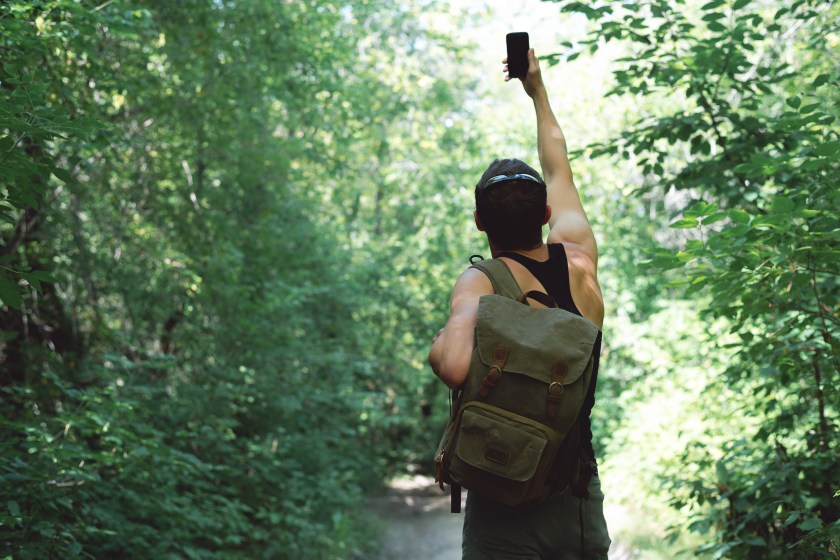
Getty Images, undefined undefined
Signal boosters are beneficial if you frequently camp in areas where the cellular signal is weak but still accessible.
WeBoost, a cellphone booster that amplifies your cell signal, has been my go-to for many years. I am continually amazed by how well the RV and car models have performed, even in the most remote places.
Though a booster generally won't take you from a complete dead zone to having a signal (if there's no service, there's no service), it might take you up to a bar to make a call if you're just on the edge of service. On several occasions, I have had the booster take my abysmal flickering small bar of "talk" to data sufficient enough that I could perform my internet-intensive work.
READ MORE: 10 Accessories That Will Make Your Van Life Way Better
Leverage the Amenities at National Parks
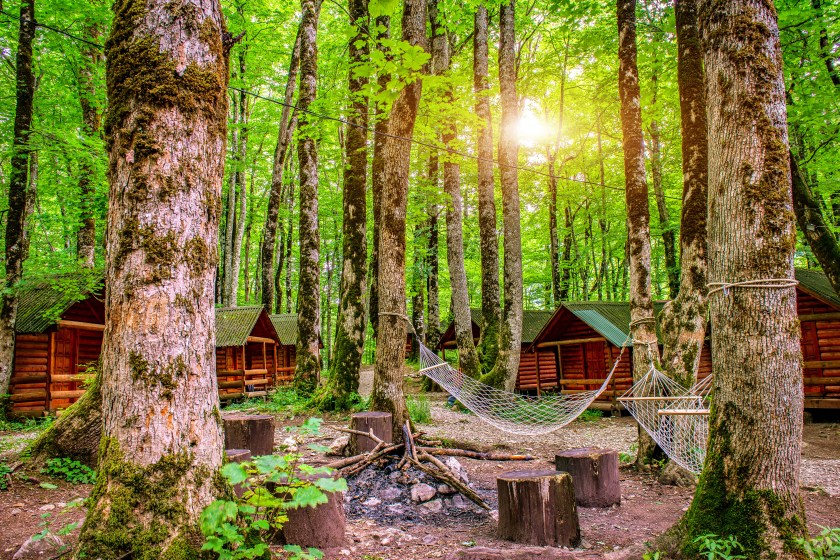
Getty Images, Kateryna Kolesnyk
National parks are generally budget-friendly and easily accessible, making them popular destinations for campers. But cell service and WiFi access are typically limited.
That said, more and more parks are offering WiFi at visitor centers, and some independent properties within the parks have also started making WiFi available to guests.
These places generally don't have great workstations, but it's worth investigating if you have to be connected while visiting the park.
READ MORE: How to Do Remote Work From Your Campsite
Ensure You Have Power
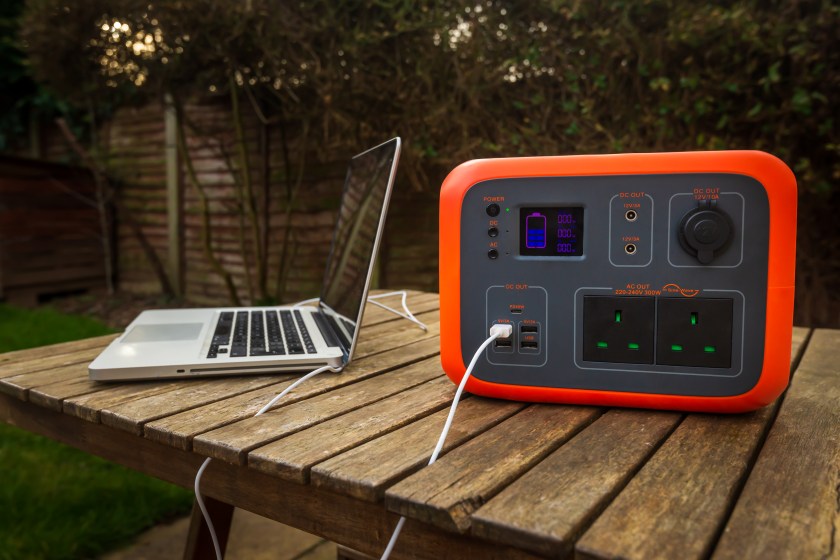
Getty Images, Lucy Ryan
Once you have a connection, you need power.
Consider investing in a portable power station, such as the Goal Zero Yeti or the Jackery Explorer series. These power stations store significant energy and provide multiple outlets for charging laptops, smartphones, and other devices.
Look for power stations with sufficient charging capacity and consider the number of outlets and charging options.
Solar chargers are another great way to stay powered up without hitting your car starter battery.
Bring Supplies for a Comfortable Workstation

Getty Images, Kemal Yildirim
You really don't want to be hunched over in your tent for hours on end, or stuck sitting in the front seat of your car.
Try and book a campsite with a picnic table, or bring a basic camping table and a camping chair to sit in for a more comfortable workstation.
And don't forget that laptops don't love being in the sun all day. If you want to work outside, set up under a picnic gazebo or a sun shade.
Establish a Work Schedule
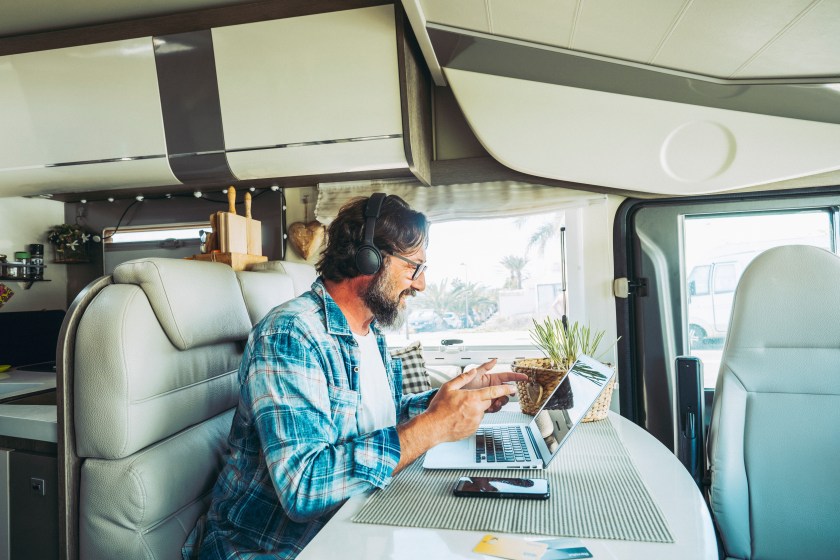
Getty Images, simonapilolla
With the allure of nature around you, maintaining a work schedule can be challenging. Create a routine and stick to it. Set specific working hours and communicate with your team to ensure everyone is aware of your availability.
By establishing a routine, you can balance work and fun without compromising productivity.
READ MORE: What to Go to School for If You Want to Work in Wildlife Conservation
